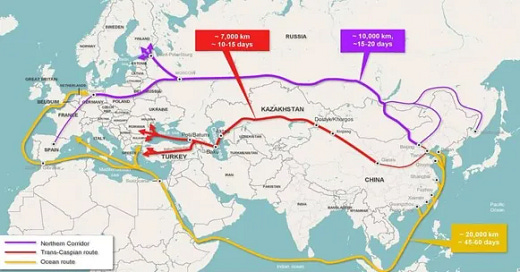Trade Corridor Dynamics
EU, Central Asia Investors Commit €10 Billion to Trans-Caspian Transport Corridor, India-Middle East-Europe Economic Corridor are effectively on ice
UPDATES: The participants of the Global Gateway Investors Forum for EU-Central Asia Transport Connectivity from the European and international financial institutions have pledged €10 billion in support and investments for facilitating the sustainable development of the Trans-Caspian Transport Corridor (TITR).
The plans announced in early September for wh…




